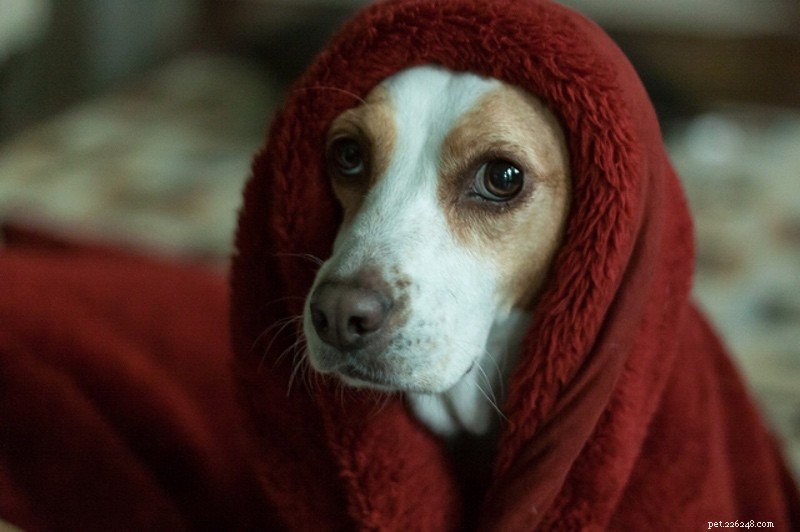
夏は休息とリラクゼーションの季節ですが、多くの場合、人間の楽しみは 4 本足の家族に影響を与えることがあります。
犬を落ち着かせるには、ペット特有の不安を和らげる方法を学ぶ必要があります。通常、犬の不安は 2 つの共通要因のいずれかによって引き起こされます。
<オール>犬を苦しめるのは難しいことですが、動物を物理的に慰めることは、恐怖反応を積極的に強化するため、害を及ぼすことがあります。犬の不安症が深刻な場合は、投薬や行動療法が必要になる場合があります。突然の行動の変化については獣医に相談してください。
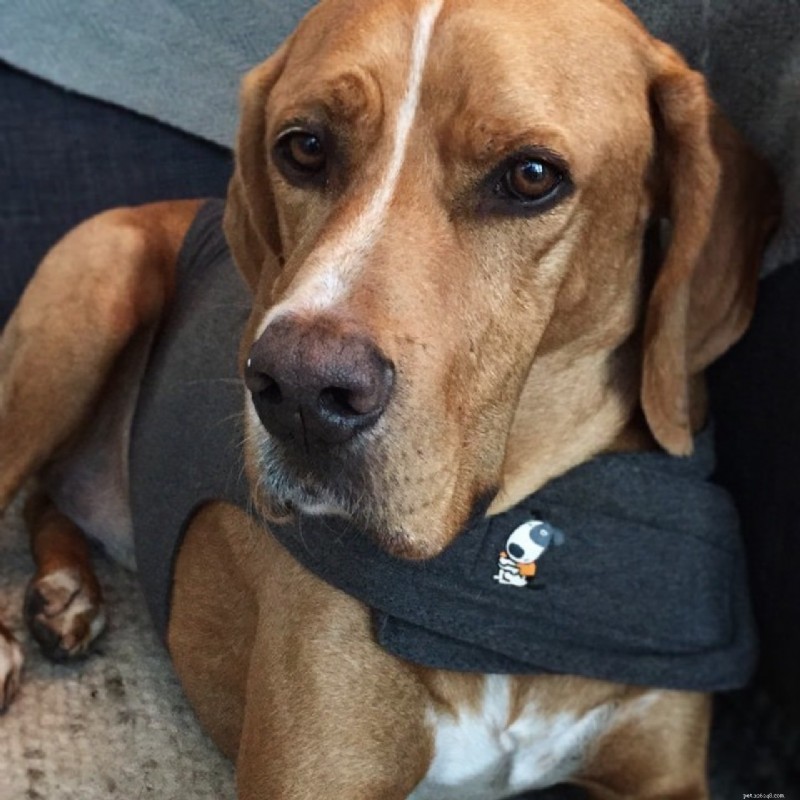
雷雨
犬が雷を恐れることはよく知られています。ペット用アウター メーカーの ThunderShirt による調査では、犬の 17% 以上が騒音恐怖症に苦しんでいると推定されています。犬が雷を怖がる理由とは?動物行動学者は、雷雨のどの部分が犬を最も不安にさせているのかを絞り込んでいません.ある理論では、ペットは気圧の低下や空気中の電荷を感じることができると仮定しています.
犬の雷不安は品種によって影響を受ける可能性があります。牧畜犬や猟犬は、嵐恐怖症の発生率が高くなります。これは、雷に対する激しい反応の後に犬が感情を抑圧するように導く、素早い反射や非攻撃性などの近交系の特徴に起因する可能性があります。虐待や放棄の歴史を持つペットは、一般的に雷恐怖症や不安を経験する可能性が高くなります.これは、雷の音との否定的な関連性または社会化の欠如による可能性があります。特に救助犬は、避難所や過去のトラウマ的な出来事のストレスの多い性質のために、より多くの不安を経験します.
騒音関連不安症の犬には、体系的な脱感作療法が推奨されます。これには、小さな音量で雷鳴を鳴らしたり、懐中電灯で稲妻を模倣したりするなど、雷雨環境を小規模に再現することが含まれます。犬は、不安や恐怖の兆候がない場合にのみ報酬を与えられ、音の否定的な連想が徐々に減少します。新しいライフスタイルの変更を始める前に、必ず獣医に相談してください。治療が選択肢にない場合、または改善が見られない場合は、投薬が必要になる場合があります。
花火
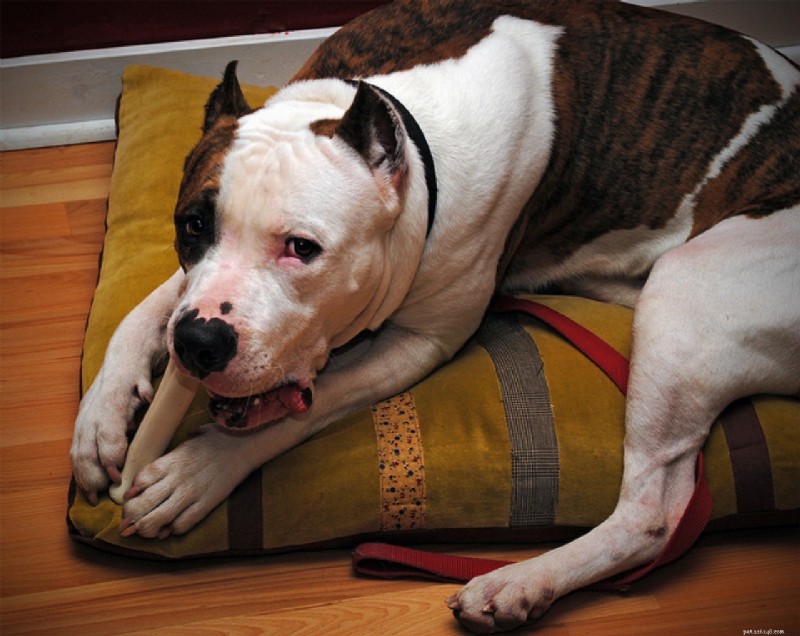
Every 4th of July dogs across the nation cower in terror. Dogs and fireworks are mortal enemies, thanks to the pyrotechnics’ low decibel sound. To human ears, fireworks are a dull whine – dogs hear, see and smell the pretty lights as a mortal danger to them. Dog Whisperer Cesar Milan says a dog’s anxiety response is “a survival instinct,” designed to keep the animal alive in potentially dangerous situations.
Fireworks can be even scarier to dogs than thunderstorms, which at least provide animals with some warning signs of the impending noise. (Remember, dogs feel the drop in air pressure and increased electrical charges that precipitate a thunderstorm.) It is possible to retrain a dog’s natural fear instinct through repeated exposure, as in the previously discussed systematic desensitization therapy. For best results, start when your pet is a puppy and acclimate him to a variety of loud noises including car horns, children yelling, and motorcycles.
If all else fails, try your best to comfort or distract your dog. Before the fireworks begin, create a soothing environment for your pup, including a favorite bed or crate as well as toys. Rawhide chews or puzzle toys can distract dogs for hours, or put on some scientifically-sound music for dogs. If your pet is accident-prone, take a potty break before you settle in or lay some absorbent potty pads down as a precaution.
Separation anxiety
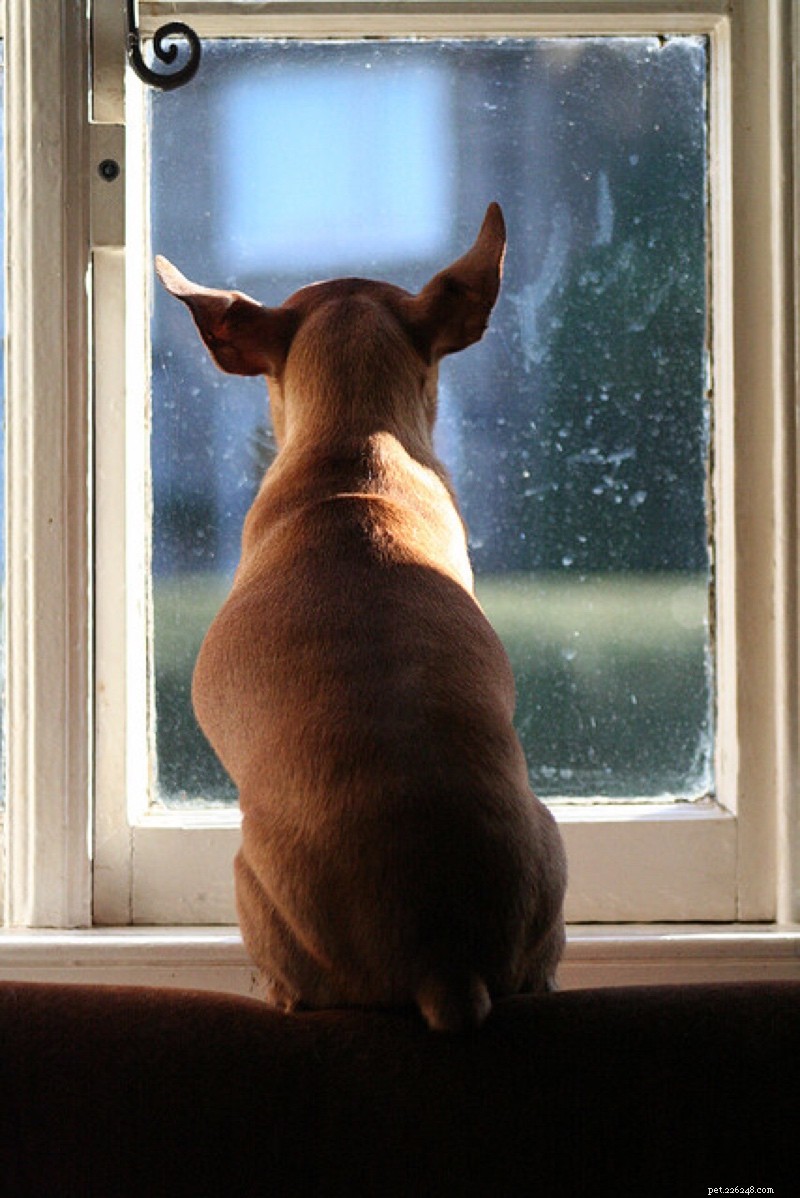
This type of dog anxiety is very common, especially among dogs who were previously surrendered or abandoned. Dogs are very social animals who typically prefer living in “packs,” be the members human, canine or even feline. When a dog with separation anxiety is left alone, he may believe he has been abandoned again; often this results in destructive behaviors as the panicked pet attempts to escape or look outside.
Young, male, mixed-breed dogs are the most likely to develop separation anxiety. Animal behaviorist Dr. Barbara S. Simpson denies any relationship between so-called “spoiling” a pet and the development of separation anxiety, but does note that close dog/pet parent relationships are more likely to result in separation anxiety.
With the rise of the pet-friendly workplace, many pet parents find taking their dog to work solves the issue. Doggy daycare or adopting a canine companion may reduce the feelings of isolation that lead many dogs to engage in destructive acts like soiling the carpet or chewing furniture. A long-term solution involves the pet parent modifying his or her routine; dogs learn and associate behaviors like putting on shoes with leaving the house. Dr. Simpson suggests practicing “graduated departures,” like putting on shoes and then returning to the couch for a while. In an American Veterinary Medical Association study, 62 percent of dogs with separation anxiety improved through simple acts by pet parents – no punishment for destructive behaviors, providing a chew toy before leaving, and increasing exercise.
Social anxiety
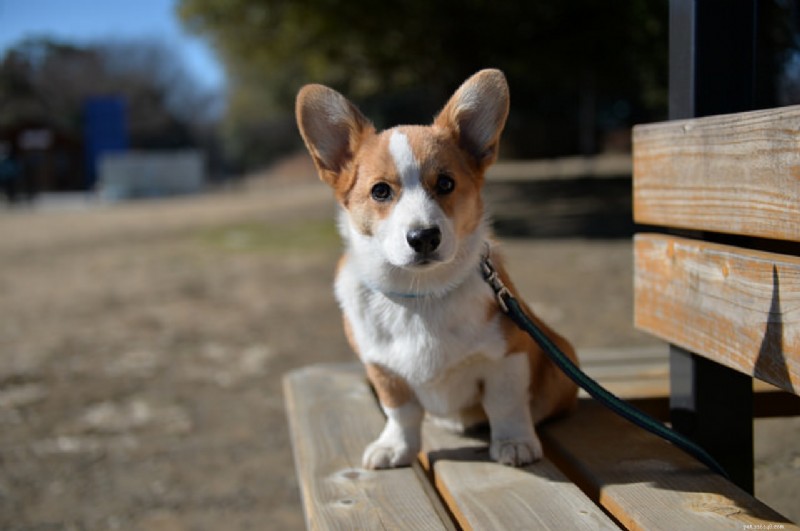
Even dogs find themselves uneasy in some social situations. Just as select pets are aggressive, others are shy and suffer from social anxiety. Often the two overlap – a scared dog is more likely to lash out – with anxiety-related fear leading to aggression. Before placing your pet in an unknown environment, consider how he or she deals with certain stressors. Crowds, children, other dogs, food smells, and loud music are all very stressful for a dog. Symptoms of dog anxiety include trembling, urination, growling, and classic body language signs like a tucked tail, pulled back ears, and avoiding eye contact.
Social anxiety in dogs can be caused by a variety of factors, including a traumatic event like a dog fight. Cesar Milan notes that the issue sometimes relates to poor self-esteem, recommending confidence-building activities and interactions with other dogs. Throw a ball for your pet, giving praise when he returns with it; even providing treats for a successful potty break will boost self-esteem.
Lack of socialization is usually the culprit, says author and dog trainer Victoria Stillwell of It’s Me or the Dog . “When you have a puppy, you have to introduce it to 100 new experiences and all different kinds of people and…dogs in a lot of different environments.” Start slow with adult dogs, gradually introducing stressful sounds and rewarding non-fearful responses. At the dog park, redirection is key to helping your pet stay calm. Introduce a tennis ball or run some obstacles, introducing one dog at a time to your pet. Ask other pet parents with solo leashed dogs if you can introduce your pet one-on-one for a practice round.
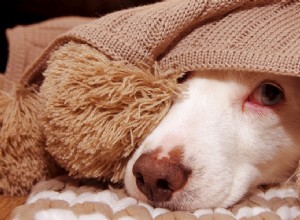
嵐の最中に犬を怖がらせるのは、雷の音だけではありません。雨、風、雷などのなじみのない音は確かにあなたの犬を混乱させる可能性があります。犬はまた、大気圧の変化を感じることができ、静電気が毛皮に蓄積する可能性があります。 雷雨の際に犬を落ち着かせる方法を学ぶ方法はたくさんあります。;あなたはただあなたの犬のために働くものを見つける必要があります。 雷や嵐が怖い犬は、さまざまな方法で不安を示すことがあります。犬のストレスの最も一般的な兆候には、泣き言、前後のペース、吠える、隠れること、さらには床に排尿することが含まれます。これらの兆候に気付いた場合は、ペットを落ち着かせ、気分を良くするのを手伝って
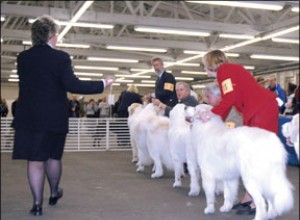
ショードッグのトレーニング:概要 1。雑種犬を飼っている場合は、雑種犬のコンフォメーション、服従、ラリー競技を提供するアメリカの雑種犬クラブをチェックしてください。 2。ショードッグと一緒に、すべてのトレーニングセッションを短く前向きに保ちます。 3。新しい行動を教えるときは、高い強化率を使用してください。犬があなたが教えている仕事をマスターするにつれて、犬を食べ物で徐々に強化し、賞賛で強化していきます。 4。著者のヴィッキロンシェットの本、ショードッグのためのポジティブトレーニングをご覧ください。 、ショーリングの犬の訓練の詳細については。 最近、大きなドッグショーのリング